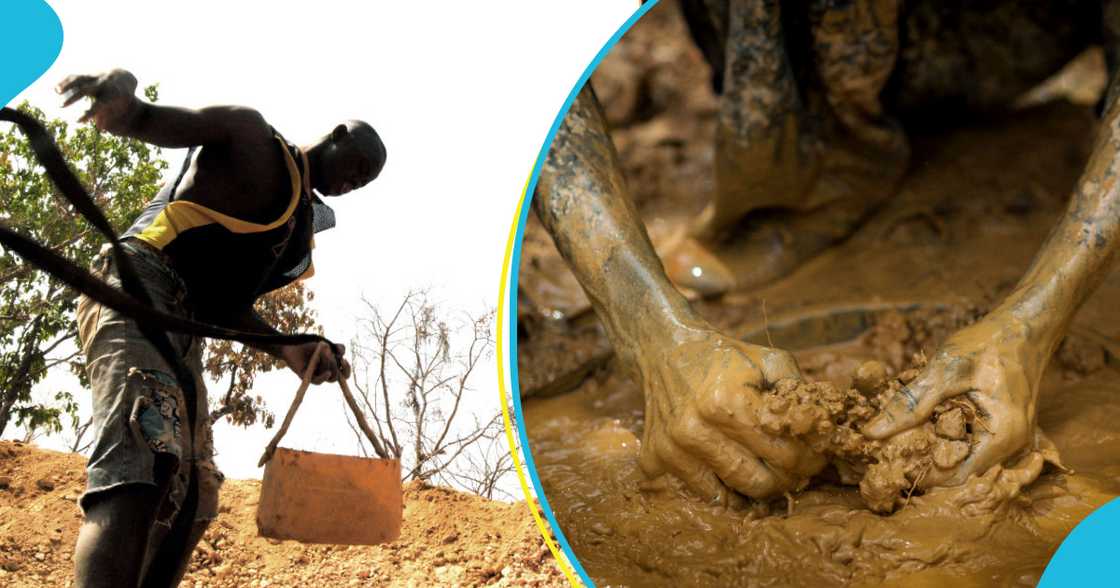- From August 2024 to September 2025, Pure Earth in collaboration with the Ghana Environmental Protection Agency conducted an effect of galamsey in the affected communities
- The research which was conducted in six region in the country showed that several crops and fishes have been contaminated due to galamsey
- The study called for an immediate inter-sectorial interbention to prevent health issues arising in such areas
A new environmental research has showed widespread contamination from mercury, arsenic, lead, and other heavy metals across Ghana’s artisanal and small-scale gold mining (ASGM) regions.
This has raised serious public health and environmental concerns after the findings of the yearlong study was disclosed.

Source: Getty Images
The year-long study titled, Mercury and Other Heavy Metals Impact Assessment, was conducted from August 2024 to September 2025 by Pure Earth in collaboration with the Ghana Environmental Protection Agency (EPA).
The research invstigated soil, water, air, fish, and food crops in six regions: Ashanti, Eastern, Central, Western, Western North, and Savannah.
Findings of the study
According to the study the mercury content in soils in Konongo Zongo of the Ashanti Region reched 1,342 ppm, which is more that 130 times the safe limit. Meanwhile, the airborne mercury at Wassa Kayianko in the Western Region reached 150 μg/m³, 150 times above Ghana’s allowed level.
Soils in almost all areas the research was conducted recorded dangerous arsenic levels. For example the soil in Konongo Zongo recorded 10,060 ppm, 4000% above safe levels.
Meanwhile, water in Konongo Odumase showed concentrations of 3.3 mg/L, higher than drinking water standards.
The lead content in fish from Akwaboso of the Central Region and Konongo Zongo were higher than WHO safety limits. Vegetables such as pumpkin leaves in the Western North also showed lead levels as high as 3.1 mg/kg.
Mercury, arsenic, and lead were detected in kontomire, tomatoes, cereals, legumes, and tubers, with some values well above international food safety thresholds.

Read also
Police recover 10 vehicles stolen from the Netherlands and imported to Ghana: “System is working”
Meanwhile, many boreholes and streams used for drinking water were contaminated, with lead and arsenic levels exceeding WHO guidelines.
Study cautions public against health risk
The study warned that people in such communities face health risks through several means. It stated that some of these means could be inhalation, ingestion, and skin contact — with potential long-term effects on the nervous system, kidneys, and child development.
The researchers suggested urgent multi-sectoral intervention, including:
- Remediation pilots in hotspots like Konongo Zongo using low-cost technologies such as phytoremediation.
- Air and water monitoring expansion, particularly during dry and wet seasons.
- Community health education through culturally relevant campaigns.
- Stronger policy alignment with Sustainable Development Goals (SDGs).
- Establishing regional environmental intelligence units with mobile labs.
- Formation of a National ASGM Environmental Response Task Force.
Source: YEN.com.gh
Source: Yen.com.gh











